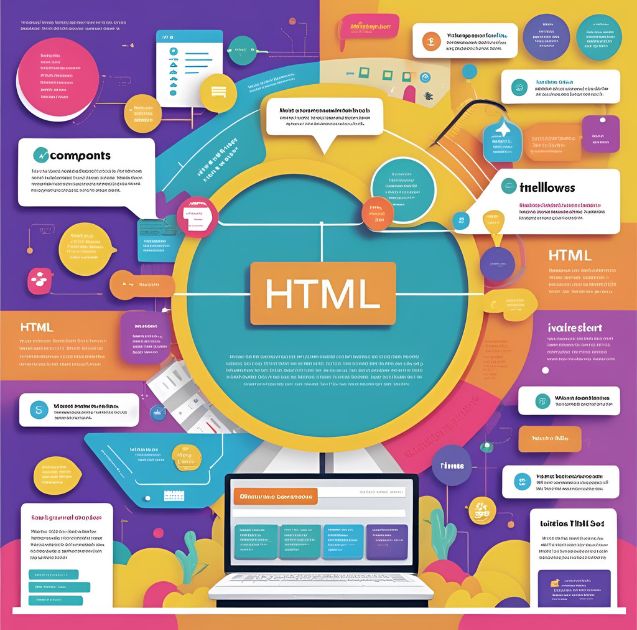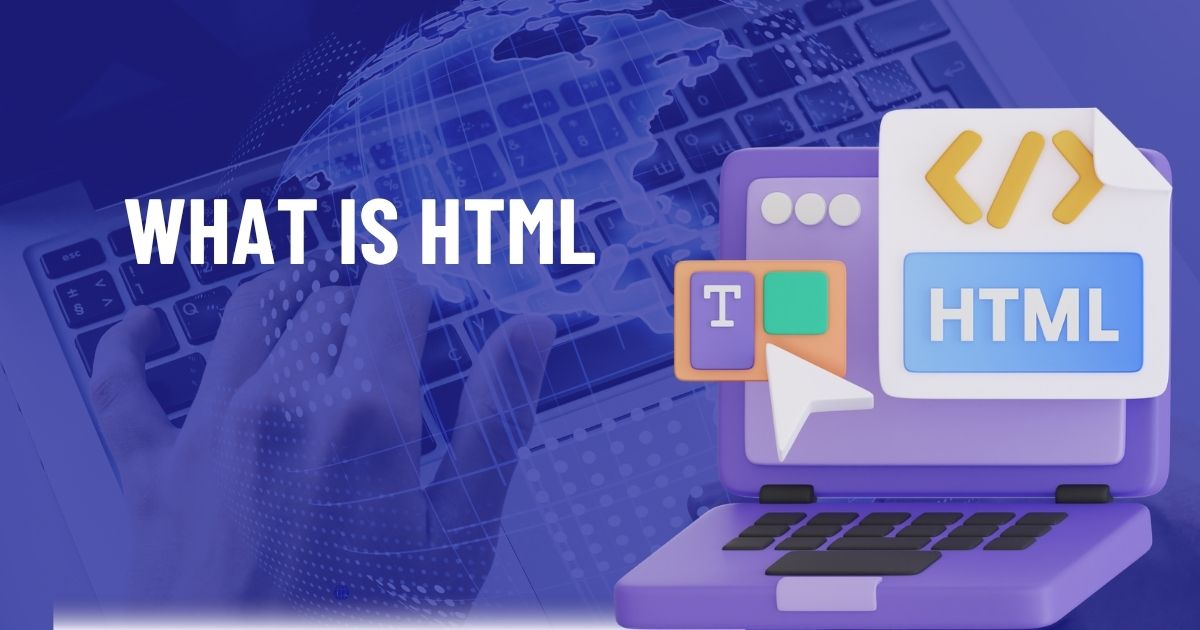HTML forms the backbone of every website you visit. Without it, the web as we know it simply wouldn’t exist. But what exactly is HTML, and why should you care about understanding it?
This comprehensive guide will introduce you to HTML fundamentals, show you how it fits into the broader web development landscape, and explain why mastering HTML is your first step toward becoming a skilled web developer. Whether you’re completely new to coding or looking to strengthen your foundation, you’ll discover everything you need to know about this essential web technology.
What is HTML?

HTML stands for HyperText Markup Language. It’s the standard language used to create and structure content on the web. Think of HTML as the skeleton of a webpage—it defines the basic structure and tells browsers how to display text, images, links, and other elements.
HTML isn’t a programming language in the traditional sense. Instead, it’s a markup language that uses tags to organize and format content. These tags act like instructions, telling browsers “This is a heading,” “this is a paragraph,” or “this is a link.”
Every webpage you visit uses HTML, from simple personal blogs to complex e-commerce platforms. It’s the universal language that browsers understand for displaying web content.
How HTML Works
HTML documents consist of elements wrapped in tags. Tags are keywords surrounded by angle brackets, like <p> for paragraphs or <h1> for headings. Most tags come in pairs—an opening tag and a closing tag—that wrap around content.
Here’s a simple example:
<p>This is a paragraph of text.</p>
The <p> tag opens the paragraph, the text appears in between and </p> closes it. Browsers read these tags and render the content accordingly.
HTML documents follow a standard structure:
- The
<html>tag wraps the entire document - The
<head>section contains metadata about the page - The
<body>section contains the visible content
This consistent structure ensures that any browser can properly display HTML content.
Core HTML Elements
Understanding basic HTML elements is crucial for web development success. Here are the most important ones you’ll use regularly.
Text Elements
Headings organize content hierarchically using <h1> through <h6> tags. <h1> represents the most important heading, while <h6> is the least important.
Paragraphs use the <p> tag to group related sentences together. Browsers automatically add spacing between paragraphs.
Text formatting includes elements like <strong> bold text <em> for emphasis and <span> inline styling.
Links and Navigation
Links use the <a> tag with an href attribute to connect pages. They’re fundamental to how the web works, allowing users to navigate between different pages and websites.
Navigation can be structured using <nav> elements that contain lists of links, making it easy for users to find their way around websites.
Lists and Organization
Unordered lists use <ul> tags with <li> items for bullet points. Ordered lists use <ol> tags for numbered items.
Divisions use <div> tags to group related elements together, making it easier to style and organize content.
Media Elements
Images use the <img> tag with src attributes pointing to image files. The alt attribute provides alternative text for accessibility.
Video and audio elements allow embedding multimedia content directly in web pages, enhancing user experience.
HTML’s Role in Web Development
HTML forms the foundation layer of web development, working alongside CSS and JavaScript to create complete web experiences.
The Three Pillars of Web Development
HTML provides structure and content. It defines what appears on the page and how elements relate to each other.
CSS handles presentation and styling. It controls colors, fonts, layouts, and visual appearance.
JavaScript adds interactivity and dynamic behavior. It enables features like form validation, animations, and real-time updates.
These three technologies work together seamlessly. HTML creates the structure, CSS makes it look appealing, and JavaScript brings it to life.
HTML in Modern Web Development
Modern web development often uses frameworks and libraries that generate HTML automatically. However, understanding HTML fundamentals remains crucial because:
- It helps you debug issues when frameworks don’t work as expected
- It enables you to write more efficient and semantic code
- It’s essential for accessibility and SEO optimization
- It provides the foundation for learning advanced concepts
Semantic HTML and Best Practices
Semantic HTML means using elements that clearly describe their content’s meaning and purpose. Instead of using generic <div> tags for everything, semantic HTML uses specific elements like <header>, <nav>, <main>, <article>, and <footer>.
Benefits of Semantic HTML
Accessibility improves when screen readers can understand page structure through semantic elements.
SEO optimization benefits from a clear content hierarchy, meaning that search engines can easily parse.
Code maintainability increases when elements clearly indicate their purpose and function.
Team collaboration becomes easier when everyone understands what each element represents.
Common Semantic Elements
Page structure elements include <header>, <nav>, <main>, <section>, <article>, and <footer>.
Content elements include <h1> through <h6>, <p>, <blockquote>, <figure>, and <figcaption>.
Inline elements include <strong>, <em>, <mark>, <time>, and <abbr>.
HTML5 and Modern Features
HTML5 introduced many new features that make web development more powerful and flexible.
New Input Types
HTML5 added specific input types like email, url, date, number, and search. These provide a better user experience and built-in validation.
Multimedia Support
Native <video> and <audio> Elements eliminated the need for plugins like Flash, making multimedia content more accessible and reliable.
Canvas and Graphics
The <canvas> Element enables dynamic graphics and animations directly in browsers, opening new possibilities for interactive content.
Local Storage
HTML5 introduced ways to store data locally in browsers, reducing server requests and improving performance.
Getting Started with HTML
Learning HTML is straightforward and rewarding. Here’s how to begin your journey.
Set Up Your Environment
You need only a text editor and a web browser to start writing HTML. Popular editors include Visual Studio Code, Sublime Text, or even simple Notepad applications.
Create a new file, save it with a .html extension, and open it in your browser to see your code in action.
Practice with Simple Projects
Start with basic projects like:
- A personal introduction page
- A simple recipe or how-to guide
- A photo gallery with captions
- A basic business landing page
These projects help you practice different HTML elements and understand how they work together.
Learn Through Building
The best way to learn HTML is by creating real projects. Start simple and gradually add complexity as you become more comfortable with the syntax and concepts.
Join Learning Communities
Connect with other learners through online forums, social media groups, and local meetups. These communities provide support, answer questions, and offer inspiration for your projects.
HTML and Your Web Development Future

Understanding HTML opens doors to exciting career opportunities in web development. It’s the foundation skill that every web developer needs, regardless of their specialization.
Career Paths
Frontend developers use HTML extensively to create user interfaces and interactive experiences.
Full-stack developers need HTML knowledge to build complete web applications from start to finish.
Web designers who understand HTML can create more realistic and implementable designs.
Content creators benefit from HTML knowledge to customize websites and create better online experiences.
Building Your Foundation
HTML knowledge provides the groundwork for learning other web technologies. Once you master HTML, you can easily progress to:
- CSS for styling and layout
- JavaScript for interactivity
- Backend technologies for server-side development
- Modern frameworks like React, Vue, or Angular
Your Next Steps in Web Development
HTML is your gateway to the exciting world of web development. It’s beginner-friendly, immediately rewarding, and absolutely essential for anyone serious about creating websites.
Start by practicing with simple HTML elements and gradually work your way up to more complex structures. Focus on writing semantic, accessible code that follows best practices. Remember that every expert web developer started exactly where you are now.
The web needs more skilled developers who understand the fundamentals. By mastering HTML, you’re taking the first crucial step toward joining this dynamic and rewarding field. Your journey in web development begins with HTML, and the possibilities from here are limitless.







